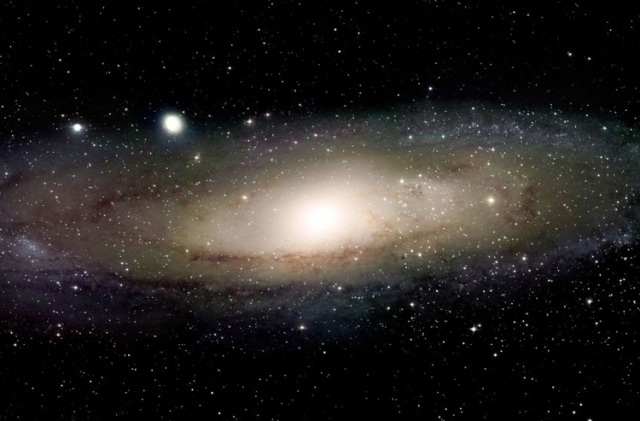New survey of universe discoveries include exotic objects
Canadian astronomers are members of an international team unveiling the first results produced by the Planck Space Telescope.
Twenty-five scientific papers have been produced in the first two years of operation of the European space observatory.
Launched in 2009, the Planck Space Telescope has nearly completed three of its four planned surveys of the entire sky. The goal of the Planck is to study the oldest source of light in the Universe, which will reveal more details about the formation and evolution of the Universe.
However, the radiation left over from the Big Bang is distorted by objects in the foreground, like galaxies, stars, gas and dust. The Planck team has produced a guidebook of 10,000 foreground objects that will become targets for future study, including several new astronomical structures:
• 189 gigantic clusters of galaxies, including 20 that have never been seen before;
• cold dust clouds where stars are forming, among the coldest ever discovered, and the first all-sky census;
• dark gas, a previously undetected type of molecular gas found clinging to the edges of giant molecular clouds in the Milky Way, and which may have an impact on galaxy formation and evolution; and,
• peculiar grains of cold dust that spin up to 10 billion times per second.
The Planck survey will help trace the large-scale distribution of star-forming galaxies, as well as provide information about the still-unclear link between dark matter and star-forming galaxies.
Some astronomers believe that dark matter may provide the skeleton for galaxies to form and evolve. The Planck catalogue will also shed new light on well known-but poorly understood-objects, like compact clumps of cold dust that string together to form huge filaments in our own galaxy, the Milky Way.
These extremely cold objects may hold clues to the history of how stars form. The Planck Space Telescope will continue to survey the Universe, with its next data release scheduled for January 2013.
The Planck Space Telescope mission is led by the European Space Agency, and includes contributions from the Canadian Space Agency (CSA).
The CSA funds two Canadian research teams that are part of the Planck science collaboration, and who participated in the development of both of Planck’s science instruments, the Low Frequency Instrument (LFI) and the High Frequency Instrument (HFI).
Professor Douglas Scott of the University of British Columbia is leading the Canadian LFI team. The HFI team is led by Professor J. Richard Bond of the University of Toronto.

























